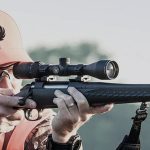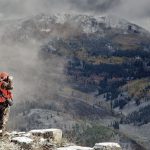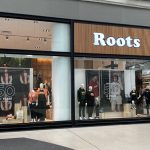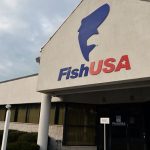Nike, Inc. saw shares rise 5.8% for the week to close at $62.02 on Friday despite a double-digit decline in fiscal first quarter revenues. The increase came as some analysts upgraded the stock after the company beat Wall Street earnings estimates on reduced SG&A spending on the back of staff reductions and a sharp decline in demand creation.
The staff reductions were part of the previously-announced 5% global cut in employees and part of the cuts in marketing expenses were due to an easy anniversary of money spent against the Beijing Olympics and the Euro 2008 Championships. The top-line, however, continues to suffer as both Europe and China saw revenues fall in double-digits as the recession took a heavy tool on Eastern Europe and Russia and China saw the effects of the Olympics evaporate into the reality of the global downturn. The cuts on the SG&A side came at an opportune time as well to offset declines in gross margins as the company found it necessary to discount product more heavily to pare inventories.
However, not all was bad news on the revenue line as Converse and Hurley both posted gains for the period and Japan footwear and equipment revenues improved in mid-single digits for the quarter, the only region to post an increase in reported revenues for either category.
NKE changed the way it reports numbers for the new fiscal year and beyond. Unlike many other companies that are reducing their visibility, Nike, Inc. did exactly the opposite and expanded its regional reporting to look more aggressively at the developing markets and Asia. The company also changed its primary profitability measure from pre-tax income earnings before interest and taxes, or EBIT, which is the primary measure used by the NKE management team and Board to make decisions about resource allocation and to evaluate the performance of individual operating segments.
Revenues for the first quarter ended August 31 decreased 11.7% to $4.80 billion from $5.43 billion in the year-ago quarter. Excluding changes in currency exchange rates, net revenue was down 7% compared to the comp period last year.
First quarter net income was up 0.5% to $513.0 million, or $1.04 per diluted earnings per share. Wall Street was only looking for 97 cents per share. Gross margins decreased 100 basis points to 46.2% of sales, which management attributed to unfavorable exchange rates and higher discounts as they worked to keep inventories clean. In-line gross pricing margins were said to be “essentially flat.” SG&A improved by 200 basis points to 32.2% of sales, representing a 16.7% decrease in expenses for the period. Marketing expenses were down 28% for the quarter.
NKE generated over $600 million of free cash flow from operations for the quarter.
The other item that apparently encouraged the market was a sequential improvement in the backlog numbers for the consolidated Nike and Jordan brands, which ended the quarter with a 6% decline (-4% currency-neutral) in backlog versus a 6% currency-neutral decline in the fiscal fourth quarter. Most of that decline came from the new Central and Eastern Europe (CEE) and Emerging Markets regions, which saw currency-neutral backlogs fall 24% and 18%, respectively.
Total consolidated Nike and Jordan brand sales declined 12.4% for the period to $4.21 billion, or a 7% decline in currency-neutral terms. Footwear sales for the two brands declined 10.1% for the quarter to $2.61 billion, apparel sales fell 16.4% to $1.28 billion and equipment fell 16.5% to $291.2 million for the period.
On a conference call with analysts, Charlie Denson, president of the Nike brand, said that the running business was “down a little bit,” and down “pretty much in every geography.” Still, he said the high-end product continues to do very well. He called out the LunarGlide+ in the performance end of the market. He also said the Japan running business was doing well. Denson said one of the bigger opportunities right now is in their core running business where they have seen “a little bit of erosion” from where they've been. He suggested they have some new products coming down the pipe to address the issue.
Denson also said they see the basketball silhouette strengthening, which “tends to move some of that casual consumer purchases back and forth between the two categories.”
Denson went on to say they are seeing ASPs on the footwear side improving in every region, with the exception of Europe. On the apparel side, ASPs are “basically flat” in U.S. and up everywhere but Europe, which he said is little bit down.
The new North America region, which includes the U.S. and Canada, saw total revenues decrease 5.2% to $1.76 billion for the combined Nike and Jordan brands. Footwear revenues declined 3.9% to $1.22 billion, apparel revenues decreased 8.8% to $443.9 million and equipment revenues were down 5.1% to $97.6 million.
Excluding changes in currency, revenues for North America declined 5% with footwear down 3%, apparel decreasing 8% and equipment down 5% for the period.
Company CFO Don Blair said revenues for most Nike brand categories were below prior-year levels, “although basketball, sportswear and action sports reported higher revenues for the quarter.” He then indicated that revenue gains in many apparel categories were more than offset by a decline in sportswear. He said that the apparel decline in Q1 represents a sequential improvement from the second half of fiscal 2009.
Denson said the Lebron and Kobe footwear franchises continue to lead Nike basketball, and the Jordan brand continues to “post some impressive results.” He said the combined basketball business delivered high-single digit revenue gains over last yea, which he was pretty good given the fact they were up double-digits for the year-ago quarter. He said action sports posted the biggest category percentage gain in Q1, up strong double-digits. He said the three-brand strategy of Nike, Converse and Hurley has proven to be a “very powerful concept with consumers.”
Denson also highlighted the gains in performance apparel and the recently launched a Pro Combat product. He said the Nike brand has gained “significant share” in performance apparel over the last two years, and have had “even stronger momentum in the last three quarters.”
The other area Denson said was starting to see some real success was in the category distribution focus, whether it's the House of Hoops with Foot Locker or some of the things that they're doing with some of their sporting goods partners, like Dick's Sporting Goods.
Direct-to-consumer revenues grew 3% for the quarter, driven by new store openings and a 19% increase in on-line sales.
North America EBIT increased 9.9% to $410.6 million due to “lower selling and administrative expenses and improved gross margins.”
Western Europe revenues were down 18.1% to $1.11 billion for the quarter, with footwear revenues decreasing 15.2% to $635.4 million, apparel revenue falling 20.7% to $392.6 million and equipment revenue declining 26.2% to $77.2 million. On a currency-neutral basis revenues were down 8% with footwear declining 5%, apparel falling 11% and equipment decreasing 17%.
Denson said that football (soccer) revenues were down, but said share has improved. The running, men’s training and sportswear categories were also down, while action sports and basketball “turned in some strong revenue increases” in the region. He said women's training also “delivered solid results, driven by apparel.” Most territories in the region posted lower revenues for the quarter.
Direct-to-consumer revenues grew 8% in constant dollars, driven by new store openings and strong on-line growth.
For the quarter, EBIT for Western Europe declined 10.7% to $288.6 million, as lower revenues were largely offset by reductions in SG&A. Gross margins in Western Europe were said to be “essentially flat.”
Central and Eastern Europe revenues declined 33.4% to $286.2 million for the period. Excluding currency changes, revenue in Central and Eastern Europe was down 23% compared to the same period last year, with footwear declining 21%, apparel falling 28% and equipment down 16% for the quarter.
Denson said the region was the “most challenging geography of all,” as “exciting growth” that existed up until about a year ago, has been impacted by the current economic conditions and currency devaluations, especially Russia. South Africa, which will host the World Cup next year, is in this region for Nike until fiscal 2012. It was the only area to post higher revenue for the quarter as the football (soccer) category “drove strong growth in advance of the World Cup.”
EBIT for the CEE region declined 35.2% to $82.2 million due to “lower sales volume, partially offset by improved margins and lower SG&A.”
Greater China, which includes Taiwan and Hong Kong, revenues fell 16.3% to $415.5 million in the fiscal first quarter. In currency-neutral terms, revenue for Greater China was down 17% from last year’s Q1, with footwear down 17% and both apparel and equipment declining 16%. Revenues were up more than 50% in the year-ago period in the lead up to the Olympics.
Denson said basketball continues to drive excitement in the market. He said running is “also on the move with the new LunarGlide+ selling through very well.”
Blair said they expect comparisons to remain challenging in Q2 for this region, but futures orders “improved sequentially from Fall to Holiday, and have returned to growth for Spring.”
First quarter EBIT increased 7.2% to $148.8 million, driven primarily by lower demand creation spending.
Japan first quarter revenues were down 0.2% to $186.0 million, but were down 10% in currency-neutral terms. Excluding currency exchange rate fluctuations, footwear revenues were down 6%, apparel fell 17% and equipment declined 5% for the quarter.
Denson said although Japan is a very tough market right now, they continue to gain share against the category leader in running in their home country, presumably talking about Asics. He also said apparel was getting a “substantial boost” through Nike Pro product.
EBIT for Japan declined 7.4% to $35.1 million, with lower gross margins were partially offset by lower SG&A spending.
Emerging Markets revenue decreased 7.9% to $421.8 million for the first quarter. This new region includes South America, Central America, including Mexico, the Pacific Countries, and Korea. Excluding currency changes, revenue increased 9% compared to last year, with 11% growth in footwear, a 9% increase in apparel and a 4% decline in equipment revenues.
The constant currency increase for the Emerging Markets was fueled by double-digit growth in Korea, Brazil, Mexico and Australia. On a constant dollar basis, the running, basketball, women’s training, sportswear, action sports and Jordan businesses were up. Overall footwear and apparel revenues were both up in currency-neutral terms.
First quarter EBIT rose 38.5% to $101.0 million due to lower selling and administrative expenses.
In the Other Businesses segment, which includes Cole Haan, Converse, Hurley, Nike Golf, and Umbro revenues decreased 4.6% to $603.9 million. Currency-neutral revenue was down 3% for Q1. The decline was driven by Nike Golf, Cole Haan and Umbro, which “continue to face tough economic conditions in key markets.”
Converse revenues were up 10%, with the U.S. posting 16% growth, and the brand reportedly delivered its “most profitable first quarter ever,” with EBIT up 13% over last year. Hurley was said the have delivered its second biggest revenue quarter ever. Hurley continued to grow at double-digit rate with market share gains.
NKE President and CEO Mark Parker said that Umbro continues its turnaround under new leadership and an ambitious innovation agenda that kicked off with the new English National Team kit.
Parker said Cole Haan and Nike Golf both operate in sectors hit especially hard by the economy, but “inventories are clean” and he said they have “lots of innovation in the product pipeline.”
First quarter EBIT for the Other businesses was flat at $87 million, as lower revenues and margins were offset by SG&A leverage.
Overall global inventories were down 6.7% are quarter-end and inventory units were 12% versus a year ago.
Looking ahead, NKE anticipates full year revenue to be down slightly on a currency-neutral basis. For the second quarter, consistent with current futures, the company expects revenues to be down in the low- to mid-single-digit range on a constant-currency basis.












